Spectrum Issues in NBP

On the same topic is a presentation you blogger gave on NBP in Japan on Monday to the Association of Radio Industries and Businesses (ARIB), an organization roughly comparable to TIA.
Andrew Seybold: "FCC (Public Safety) Spectrum Plan Based on Faulty Logic"
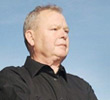
He thinks the PS problem is more about spectrum than it is about money and feels FCC is focusing too much on the money issues. He points out in the following table, that all of public safety has less spectrum than any of the big carriers:
Here is a typical statement from Mr. Seybold:
The FCC’s tenor when discussing the NBP report with the public safety community[4] appears to be that if the public safety community wants FCC support for funding the network build-out, it needs to accept the rest of the FCC’s recommendations in the NBP report.
The public safety community has responded that the funding is immaterial without enough broadband spectrum to build out the network and has concentrated on pointing out the need for additional spectrum, the willingness of commercial operators to work with public safety, and the fact that even the funding model used by the FCC is flawed.
...
In the body of this paper, we will prove that the entire FCC white paper is based on faulty and unsupported logic.
Apparently, you can’t please all the people all the time!
Current German Spectrum Auction
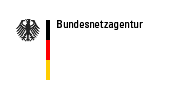
The most important spectrum auction ever held by Germany started on April 12th, after having suffered various delays for a couple of years: about 350 MHz in the 0.8, 1.8, 2.0, 2.6 GHz bands. Some of the spectrum offered is paired, some is not.
The German telecom regulator is running the auction (over the net of course) which, after 11 active days and 82 rounds reached 1.60 billion Euros, i.e. over 2 billion $ (at the current rate of exchange).
There are four contenders only, namely the main mobile operators competing in the German market: T-Mobile, Vodafone, 02 (owned by Telefonica) and E-Plus (owned by the Dutch telecom company KPN).
Whereas a few months ago, the financial expectations about the auction were rather modest, some qualified observers now mention amounts as high as 9 billion Euros (nearly 12 billion $’s) as a possible outcome. This could still require many rounds though. And the regulator has made it clear that the objective was not to maximize the proceeds.
The four contenders are mainly attracted by the 0.8 GHz band for which the bids represent at this stage 86 % of the total bids, though the amount of spectrum in that band is less than one fifth of the total offered.
Press release from German regulator on auction.
UPDATE
M. Barth writes from Paris on May 4:
“I would have liked at this stage to bring you real NEW NEWS. But the auction just goes on, in great silence apparently. At the moment it has reached the 127th round and 2.9 billion euros (3.8 Bill $'s at the current rate); not bad for a nation the size of which is less than one fourth of the US.
During the last ten rounds the major movement continued to be in the 0.8 GHz band (hence a great message re the digital dividend). But there also were a few new bids in the other bands; much less significant though.”
FCC Enforcement: A Glass Half Full or Half Empty?

“We have written elsewhere about the irritations of other people using cell phones in public places. Technology, having caused this problem, also offers a solution: widely available on the Internet are jammers that silence phones nearby, and sometimes at a considerable distance. We Googled “cell phone jammer” and found dozens of places selling them.
Some outfit calling itself the “Federal Communications Commission” has declared jammers to be illegal. Recently it levied a fine of $25,000 against a company with the unwisely chosen name of “phonejammers.com” that offers them on the Internet.”
Sounds like FCC is back in the enforcement business? Maybe not or at least not with any enthusiasm. After a long time period a $25,000 fine with no equipment seizure. Surely Phonejammer’s legal bills were much higher than this fine. Is this a message adequate to deter Phonejammer or anyone else from such activity?
A previous post described the 23 month saga of FCC enforcement action against a GPS jammer. So how did FCC do in the present case? Well, maybe 23 months is a secret time limit for enforcement action. So here are milestones in this case from the public released FCC Notice of Apparent Liability for Forfeiture (“NAL”):
- “On May 22, 2008, the Spectrum Enforcement Division (“Division”) of the Enforcement Bureau (“Bureau”) issued a Citation to Phonejammer pursuant to Section 503(b)(5) of the Act”
- “On November 9, 2009, the Bureau’s Dallas, Texas Field Office (“Dallas Field Office”) received a complaint from a provider regarding interference to its authorized cellular and PCS frequencies in the 800 MHz and 1900 MHz bands...During the course of its investigation of the complaint, the Dallas Field Office determined that the interference had been caused by a 5 watt adjustable power jammer identified as Phonejammer model number PJ005 (“Model PJ005”), installed at a Carrollton business.”
- “On February 4, 2010, the Division issued a Letter of Inquiry (“LOI”) initiating an investigation into Phonejammer’s marketing of phone jammers in the United States.”
- “In March 2010, during the course of investigating a complaint from the St. Lucie County, Florida Sheriff’s Office (“SLCSO”) regarding interference to cellular and PCS frequencies utilized by SLCSO detectives, the Bureau’s Tampa, Florida Field Office (“Tampa Field Office”) traced the interference to a phone jammer installed at a business located in Port St. Lucie, Florida.”
- April 20, 2010 - NAL released by FCC
So it looks like the investigation go lost after the May 2008 initiation. The FHH CommLawBlog folks point out, “We Googled ‘cell phone jammer’ and found dozens of places selling them.” Does EB use Google?
A key issue throughout the investigation was the statement by Phonejammer that they were not actually selling jammers within the US. Did EB attempt an “undercover buy” to nail down this point early?
If EB takes years to deal with blatantly illegal GPS jammers and cellphone jammers, it is unlikely they deal at all with other equipment that has more subtle violations such as power exceeding legal limits or strong out-of-band emissions. Sources in EB tell me that during the DTV transition when EB agents were visiting electronics retailers in large numbers to check for proper labeling on TV receivers being sold they were actively discouraged from noticing other equipment being sold that was illegal. Thus a return to the Adm. Nelson “telescope to the blind eye” approach.
But the continued indifferent approach to enforcement raises the real possibility of massive sales of an interfering device before regulatees demand action which then could be too late.
Enforcement may not be as much fun as making the NBP, but it is also part of the job for FCC
======
Parenthetically, the NAL contains in para. 6 the sentence, “Thus, intentional radiators that cannot legally be operated – because, for example, they interfere with or jam authorized cellular or PCS communications in violation of the requirements set forth in Section 333 of the Act – are not eligible for a grant of equipment certification.”
When your blogger worked at FCC, OGC was very strict on forbidding the staff to say in documents written under delegated authority what powers the FCC did not have. This quote in the NAL has not footnote other than a general cite to Section 333. As the South Carolina Department of Corrections and 28 other state corrections agencies have said in their petition, this view is inconsistent with the legislative history of Section 333 - which resulted from a request of EB’s predecessor from cases dealing with aircraft jamming by licensed pilots. July 13th will be the first anniversary of the SCDC petition’s filing which has seen no public action yet.
"Internet speed" vs. "Government speed"
“Internet speed” is the astonishing exponential growth that has marked the growth of both the Internet and many other contemporary digital technologies. “Government speed” is the speed at which governments operate. Now some governments operate faster than others, but in the big scheme of things the difference isn’t that great. Any semblance of due process forces governments to deliberate over the impact of possible decisions and consider alternatives. Maybe the N. Korean government might be faster than more democratic governments, but that could only happen if “Dear Leader” focuses on the issue in question, which is probably unlikely for the topic of spectrum policy.
Any form of spectrum regulation which is “prescriptive” - saying what can be done and by implication forbidding everything else - inevitably will cause problems as technology moves on and the IT needs of a society and economy evolve at Internet speed. Of course, regulatiosn are doomed to fall behind because of the much slower “government speed”.
This is why the May 9, 1985 FCC Docket 81-413 decision was so successful in enabling Wi-Fi and Bluetooth. It didn’t try to create a Soviet style plan for technology, rather it removed barriers and set interference-related regulations. It was a fail-safe decision in that if now one every utilized it, no one would have been harmed either. Thus when interest developed in wireless LANs within a few years, the proponents did not have to go beg regulators for a sliver of spectrum and fight off others who coveted their goal. The 81-413 gave them the green light as well as allowing other uses of the ISM bands.
In general this problem continues and the only way to address it is a combination of deregulation to allow spectrum to evolve faster in most non-public safety applications and secondary markets to allow new users to get rapid access to spectrum. Faster adoption of regulations will inevitably fail to keep up.
Wi-Fi in UK Pubs


Not so long ago, free Wi-Fi access gave pubs an edge. Now it’s increasingly expected by a wide range of customers, reports Robyn Lewis.
It was McDonald’s that started it all really, with its offer of free Wi-Fi in most of its 1,200 UK outlets back in 2007. Now there’s not just Starbucks, Pret A Manger and Krispy Kreme offering free access, but also Slug & Lettuce, JD Wetherspoon — and now Punch Taverns has teamed up with internet provider The Cloud to install Wi-Fi in at least 1,000 of its locations by September 2010 as well.
Like it or not, new-fangled Wi-Fi is becoming as much a part of a standard pub offer as ice and a slice — and if you haven’t cottoned onto this yet, it’s time to start thinking about it before you get left behind.
2 Pragmatic Cognitive Radio Papers from DySPAN 2010

Thought I would share 2 pragmatic papers from the conference with readers. CR has the reputation of being a challenge in the face of the “spectrum haves” that will do them no good and possible/likely harm. Indeed many people believe that cognitive radio means lister-before-talk passive sensing of the spectrum to be used. They correctly point out that LBT will inevitably involve some sensing errors. However, opponents of CR usually ignore that high processing gain (the ratio of detector sensitivity to normal receiver sensitivity) and multiple site sensing can reduce error rate to arbitrarily low levels.
Let’s go back to Joe Mitola’s original 1998 definition of CR:
“The point in which wireless personal digital assistants (PDAs) and the related networks are sufficiently computationally intelligent about radio resources and related computer-to-computer communications to detect user communications needs as a function of use context, and to provide radio resources and wireless services most appropriate to those needs.”
Note, that the key point is “user communications needs as a function of use context” NOT LBT which is just one possible means to this end.
With that in mind you might wish to read the paper “Cognitive Radio, the Market and the Regulator” by Peter Anker, Technical University Delft. Abstract:
At the moment in a number of countries experiments with the use of cognitive radio are performed. However, there is a considerable degree of uncertainty regarding the potential application of cognitive radio. For successful use of cognitive radio, there is a need for cooperation between the technology developers, the market players and the regulator to reduce these uncertainties. In this contribution a proposal is made to make a more congruent approach towards the implementation of cognitive radio to lower these uncertainties to an acceptable level, with a special emphasis on the role of the regulator.
Your blogger’s paper entitled “Cognitive Radio Under Conservative Regulatory
Environments: Lessons Learned and Near Term Options” might also be of interest. Here is the abstract:
In recent regulatory decisions, spectrum regulators have been very conservative in permitting use of cognitive radio systems requiring large “safety margins”. This paper describes the nature of these safety margins and the factors that lead to them. New research that might counter such concerns is suggested. Cooperative approaches involving primary user systems that actively cooperate with cognitive users ad also suggested.
A key point is shown in the diagram below.
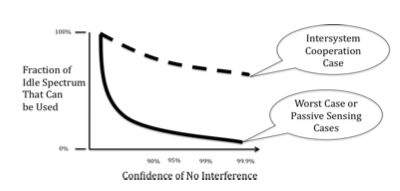
This shows the inverse relationship between fraction of idle spectrum that is used and confidence of no interference s well as the benefit of using intersystem cooperation vice passive sensing only.
IHT: "The Triumph of the Ordinary Cellphone"
While still in Singapore, I read an interesting article from the International Herald Tribune, the formerly great paper that is now basically the international edition of the NY Times. The article focused on how Americans use cell phones vice other nationalities. Indeed, the Singapore The Straits Times headline for the article was “US not plugged into cellphone revolution”.
Here is the beginning of the article:
What if, globally speaking, the iPad is not the next big thing? What if the next big thing is small, cheap and not American?
Americans went gaga last weekend with the iPad’s release. But even as hundreds of thousands here unwrap their iPads, another future entirely may be unfolding overseas on the cellphone.
Forgotten in the American tumult is a global flowering of innovation on the simple cellphone. From Brazil to India to South Korea and even Afghanistan, people are seeking work via text message; borrowing and lending money and receiving salaries on cellphones; employing their phones variously as flashlights, televisions and radios.
This reminded me that one of the points in the broadband plan was that broadband access is increasingly becoming key to finding employment opportunities. Apparently in other countries, SMS-like services is important for employment.
I am not sure if there is anything wrong between these 2 different approaches, but thought I would point out to readers the interesting view of the author.
Cognitive Radio Conference in Singapore
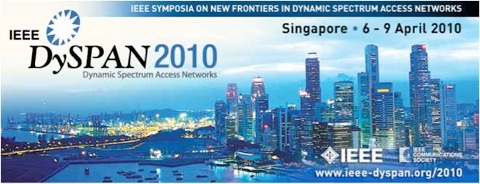
Despite the poor economy, there are 253 attendees registered as the conference starts, including 47 from US. No one from FCC or NTIA came, although FCC alums include Bill Luther, Paul Kolodzy, Doug Sicker (the conference cochair), and myself.
During the keynote session, Dr. Geok Leng Tan, CTO of the Information Development Authority of Singapore, the local “FCC”, proudly announced a new program to encourage field testing of TV band white space devices in Singapore. This is a bold approach for a country only a few km from neighboring Malaysia.
In its announcement IDA stated
1.1 In Singapore, the spectrum of radio frequencies currently allocated for use, on a primary basis, for the provision of terrestrial broadcast services in the Very High Frequency (“VHF”), between 174 to 230 MHz, and the Ultra High Frequency (“UHF”) bands, between 494 to 790 MHz, are not all in use at any given time. The spectrum not in use for the provision of broadcast services in Singapore consists of both interleaved and contiguous spectrum blocks. The unused spectrum is known as „white spaces‟. These white spaces are situated below 1 GHz, and the propagation characteristics at these frequencies allow radio signals to travel long distances and penetrate buildings easily.
1.2 IDA welcomes the conducting of trials for white space technology in Singapore, by any interested party, to explore the various spectrum environments and regimes that white space technology could operate in. To facilitate the investigation and testing of white space devices and systems in Singapore, and to ensure continued protection of licensed services in Singapore from possible interferences that may occur during the trial period, IDA has developed a set of terms and conditions and the application procedures for interested parties who wish to conduct white space trials.
Japan Considers End to "Locked" Cellphones

How high are these rates? Consider the following discussion from T-Mobile on their website:

So what is the “international roaming rate for the country you’re in”? Even the worldwide resources of T-Mo it seems to be unable to put this information on their website. Isn’t that odd since T-Mo is a cellular carrier in 12 countries?
VZW does disclose their roaming rates, which range from $0.69 to $2.89/minute depending on country. Being a CDMA carrier, they can not provide service with their usual phones in Europe which has mandated GSM-only to boost their local industry.
AT&T at least makes it easy to find their high roaming rates. So why does it cost a dollar or more a minute to use your cell phone overseas even for calls to hotels and restaurants in the same city you are in? Don’t the carriers know that the fair market priced for competitive international service voice calls is under $0.10/minute? (Just look at the phone cards in your neighborhood 7-11.)
Well at least the Japanese MIC under the new left wing government is being pro-consumer here and thinking about allowing Japanese consumers on overseas trips to take out their Japanese SIM card and replace it with a local one from the country they are visiting. That’s what I do. As a former resident of Europe, I have an unlocked GSM phone. (France Telecom/Orange unlocked it for no charge it after I had used it for a year.) When I go overseas I buy a local SIM and use it for calls while traveling. ( I generally get a prepaid card for landlines to call home although I can receive incoming calls from the US on the cell phone.)
Now I know that the carriers will argue that their current pricing model with phone price being heavily subsidized by monthly fees justifies the introduction of smart phones like iPhone and Droid. But why is their so little information on the implications of this practice if you travel overseas and why is it so hard to get a simple phone that is unlocked in the US?
UPDATE
While passing through Narita Airport on the way to Singapore, I picked up the Japan edition of the IHT which has a section from Asahi Shinbun - the major Japanese left of center paper. They had their own article on the MIC proposal. Here is their more specific explanation of the proposal:
“The ministry is expected to ask carriers to lift the restriction on cellphones sold in the future if customers make such a request six to 12 months after the purchase of each handset. Although the guidelines are not compulsory in nature, mobile phone companies will be expected to comply on a voluntary basis.
The ministry has yet to consider whether or not to include cellphones already in use in its guidelines. The mobile companies have basically agreed to follow the guidelines.”
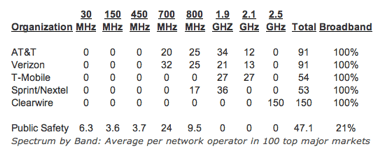

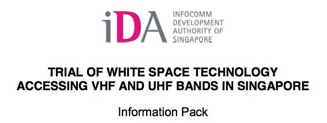
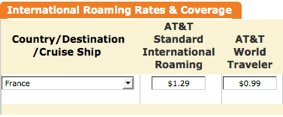


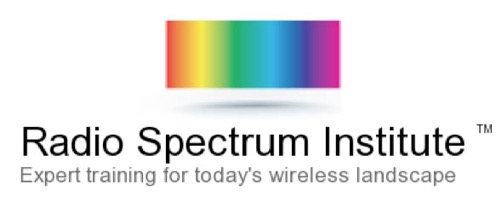


![Validate my RSS feed [Valid RSS]](valid-rss-rogers.png)

